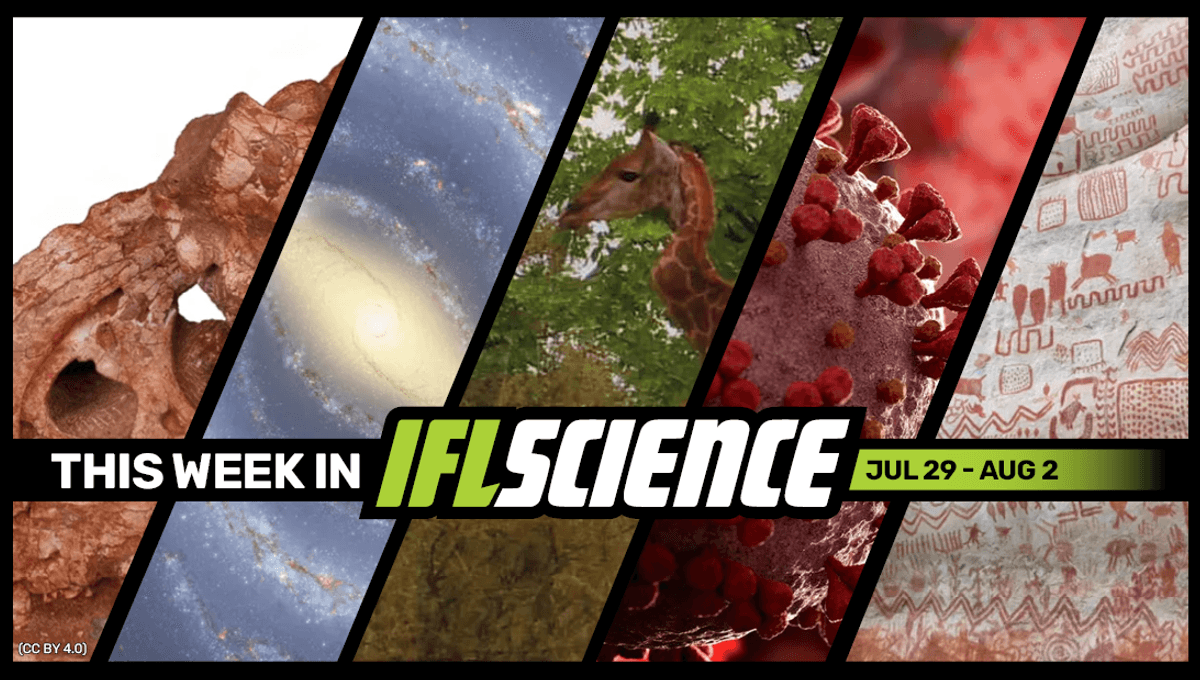
This week, ancient stars have been found in an unlikely region of the Milky Way, a wonky-necked giraffe has been spotted in South Africa, and rock art provides evidence that South America’s early humans were in contact with diverse local wildlife. Finally, we question if cortisol, the “stress hormone”, is really the health villain it’s made out to be.
Subscribe to the IFLScience newsletter for all the biggest science news delivered straight to your inbox every Wednesday and Saturday.
New Species Of 69-Million-Year-Old Tyrannosaur Identified In Awesome Fossils
A new tyrannosaur has been identified from China, dating back 66 to 72 million years. It was retrieved from the Nanxiong Formation of Nankang District, Ganzhou City, and has a lot to say about the evolution of tyrannosaurs. Among the tyrannosaurids, the group of dinosaurs that includes Tyrannosaurus rex, we observe two key body types, one of which was recently identified in southeastern China – and it’s exciting news for tyrannosaur fans. Read the full story here
Ancient Stars Found In Unlikely Region Of The Milky Way
Our galaxy, the Milky Way, is a spiral galaxy. Its main components are a bulge at the center, a thin disk and a thick disk where the spiral arms are located, and a halo. The thin disk is believed to be the youngest component of the galaxy. So imagine how surprised astronomers were when they found some stars in it almost as old as the universe. Read the full story here
Wonky-Necked Giraffe Spotted In South Africa Is Somehow Still Alive
Sometimes in the animal world, genetics or circumstances throw something of a curveball. From dolphins with “thumbs” to whales with curved spines, these animals with slightly unusual morphology open up questions about survival and adaptations to different environments. That includes the latest addition to the gang: a giraffe with a wonky neck. Read the full story here
COVID-19 Vaccine Nasal Drops Could Stop Viral Transmission
You probably associate vaccination with a needle jabbed into your shoulder muscle, giving you that annoying muscle soreness for many hours (even days) after. Traditionally, most vaccinations are delivered in this way: intramuscularly. Now, a new vaccine delivered as nasal drops (just try not to sneeze) shows promise for drastically reducing transmission of airborne disease. Read the full story here
Rock Art Shows Early Humans In South America’s Contact With New World’s Animals
When people first set foot in the Amazon Basin thousands upon thousands of years ago, they were greeted by countless never-before-seen animal species. Remarkably, a smattering of the early encounters between humans and beasts were documented in the ancient rock art of Colombia. Read the full story here
TWIS is published weekly on our Linkedin page, join us there for even more content.
Feature of the week:
Cortisol: Is The “Stress Hormone” Really The Health Villain It’s Made Out To Be?
Anyone who’s stumbled onto the “wellness” side of TikTok recently will no doubt have seen some sort of video about cortisol, with a whole bunch of people claiming that an imbalance of the oft-dubbed “stress hormone” is responsible for all sorts of health problems. Should we really be worried about it, or is this yet another case of popular pseudoscience? Read the full story here
More content:
Have you seen our e-magazine, CURIOUS? It’s just turned 2! Issue 25 August 2024 is available now. Check it out for exclusive interviews, book excerpts, long reads, and more.
PLUS, season 4 of IFLScience’s The Big Questions Podcast has begun. So far we’ve asked “Why Are We The Only Surviving Human Species?”, “How Is Climate Change Impacting Our Health?”, and “Is Evolutionary Biology Sexist?”
Source Link: Awesome Fossils Of New 69-Million-Year-Old Tyrannosaur Species, COVID-19 Vaccine Nasal Drops Could Stop Viral Transmission, And Much More This Week